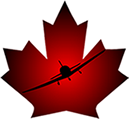 |
|
Landing/Takeoff Considerations: Runway Slope
“The safest road to Hell is the
gradual one – the gentle slope, soft underfoot, -- C.S. Lewis -- Not all runways are smooth, straight, and flat. A shocking reality, but there it is. As more and more pilots get their training at larger, controlled, paved airports, fewer and fewer new pilots have had experience dealing with some of the more challenging aspects of working out of airports and aerodromes that present a different, more irregular environment. Even some seasoned pilots experience difficulties when facing a new airport with a runway of a different size or slope than the ones with which they are familiar. We discuss the illusions and challenges of dealing with sloped runways during training, but it’s a whole new experience when we are faced with the reality. This was brought home to me just recently. I was flying with a friend who had recently been checked out on his beautifully restored Cessna 170B. We headed off for a bit of a tour and set up for approach at an airport unfamiliar to him. His approach was a bit high as is fairly typical at the end of a cross country flight—we all hesitate to give up all that nice altitude—and the runway had a fair degree of up-slope. The combination made for a very interesting landing. A bit of fast footwork sorted things out, but the surprise was evident on his face. Tricked again. If we combine slope with a few other interesting challenges—obstacles, wind sheer, sloping terrain, perhaps some density altitude and/or an unpaved surface, we can discover we have our hands full. In order not to scare ourselves, let’s tackle the problem a bit at a time. Let’s focus on slope. Landing and taking off from a sloped runway is neither a good nor a bad thing. It is just a bit different than working with a nice, flat landing surface. Of course, it is the flat surface that is used to give us the baseline performance standards in an aircraft POH. There are three, immediate consequences of dealing with a sloped runway: the effects of the slope itself, the factor of wind, and the visual illusions encountered. To keep things simple, we’ll tackle factors like density altitude, surface, and wind sheer another day. In simple terms—all else being equal—if we have a choice, we would opt to land uphill and take off downhill. The up-slope will shorten our landing roll and the down-slope will shorten our takeoff role. We will have that wonderful and inexplicable force called gravity working for us for a change. On a downhill takeoff, a portion of our weight vector will be acting as if it were thrust; on an uphill landing, a portion of our weight vector will be acting as if it were drag. You can draw the triangles yourself and measure, if you like, or calculate the effect mathematically (god forbid). Slope effect = sin θ x aircraft weight. For example, a 2500 lb. aircraft landing uphill or taking off downhill on a 2○ slope will have an increased drag or thrust factor of 87.5 lbs. (sin 2○ = 0.035; sin 2○ x 2500 = 87.5). I’d like to talk about some Rules of Thumb. It’s important to remember, however, Rules of Thumb are only what they are: a simple way to arrive at a ballpark solution. For specific answers to questions, it is necessary to go directly to the Pilot Operating Handbook or Aircraft Flight Manual for your aircraft and work with the tables and charts provided. The lower the margin of error you can live with, the greater the accuracy you must work with. A good Rule of Thumb for estimating the advantage or disadvantage of a sloped runway is that a 1.0% runway gradient—an increase or decrease in altitude of 10’ for every 1000’ of runway length—is equivalent to a 10% increase or decrease in effective runway length. Just as density altitude can be thought of as performance altitude, the altitude at which the aircraft “thinks” it is operating, so too effective runway length can be thought of as the performance length of the runway, the length of the runway the aircraft “thinks” it has to work with. For example, landing on a 1500’ runway with a 3.0% up-slope will give us an effective runway length, a performance length, of almost 2000’ (1500’ x 1.3 = 1950’). Landing downhill on that same runway will give us an effective runway length of just over 1000’ (1500’ x 0.7 = 1050’). If you find yourself at an unfamiliar, sloped runway with no published information, you can make a rough estimate of the slope by using your altimeter. Taxi to one end of the runway, set your altimeter to some easily readable number, say 1000’, taxi to the other end and read the difference in altitude. Divide the difference by the length of the runway—you can pace it out if there is no alternative—and you have the slope gradient in percent. Sadly, life isn’t always quite so simple and straightforward. One aspect of takeoffs and landings that must always be considered is wind. As a general Rule of Thumb, a 10% increase in groundspeed results in a 20% increase in ground roll. This is a strong argument against being casual about approach speed on landing and about landing or taking off with a tailwind. If our touchdown speed is, for example, 50 knots and we require 500’ to execute our landing roll in no wind conditions, landing with a 5 knot tailwind will increase our landing distance by approximately 100’ (5/50 = 0.1 or 10%; 1.2 x 500’ = 600’). On takeoff, with the same 5 knot tail wind, our ground roll will be increased approximately the same 20%, perhaps slightly more. Putting the two factors of slope and wind together, we can determine that approximately 1.0% of slope is equivalent to 2-3 knots of wind in its effect on take-off and landing performance. It will require at least a 3○ up-slope to counteract the effects of a 6-10 knot tailwind on landing. For most general aviation aircraft, takeoff with tailwinds greater than 10 knots is not recommended under any circumstances. Ideally, we would choose to take off downhill with a headwind and land uphill with a headwind. This isn’t always possible. In the event that we must take off or land with the wind at our tail, particularly on shorter fields, some careful calculations are called for. A basic Rule of Thumb for all flying is “If you’re not SURE it’s safe, don’t do it.” It may be more prudent to wait things out and live to fly another day rather than trust to luck and hope things will work out. Understanding visual illusions is also important particularly when setting up for landing on a sloped runway. Illusions in themselves are not a problem. The problem comes from failing to recognize you are experiencing an illusion and in responding to visual information as though everything your poor, old brain is telling you is the whole truth and nothing but. The easiest way to simulate the illusions resulting from a sloping runway is to hold your arm straight out from your shoulder, palm down with your hand flat. This is what a level runway looks like on a normal 3-5○ approach. Now, tilt your hand up 10○. This is the view you see when setting up for landing on an up-slope runway. The illusion tells you you are too high. The potential danger is that you will respond to the illusion rather than the reality and come in too low. Tilting your hand downward simulates the illusion of the down-slope runway. The illusion is that you are too low and, thus, the potential difficulties arise when you approach the runway at too high an altitude. Landing on a down-sloped runway is particularly difficult because, as you flair, the runway drops away and you risk running out of airspeed while still well above the landing surface. Gently does it. We already saw that landing on a down-sloping runway will increase our landing distance by virtue of the addition to our thrust vector provided by the weight of the aircraft. When we combine this with the natural tendency to approach too high resulting from the visual illusion and couple that with the difficulty of finding the surface after flair, we must be very alert to the rapidly shrinking options before us. Always be ready to execute a missed approach: add power; level off; go around for another try. Sloping runways provide an interesting challenge to flight. Learning to deal with them successfully allows access to a number of wonderful airports and aerodromes that are well worth visiting. Enjoy the process of learning new techniques and remain safe by being careful and prepared. |


